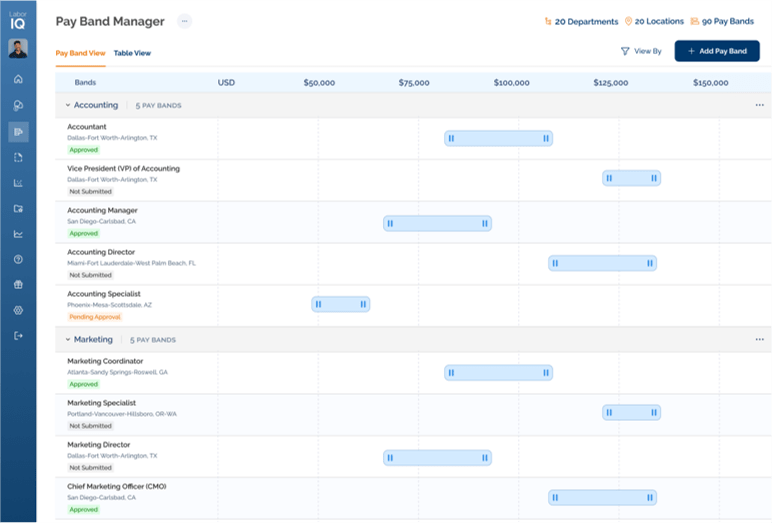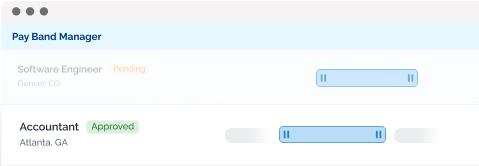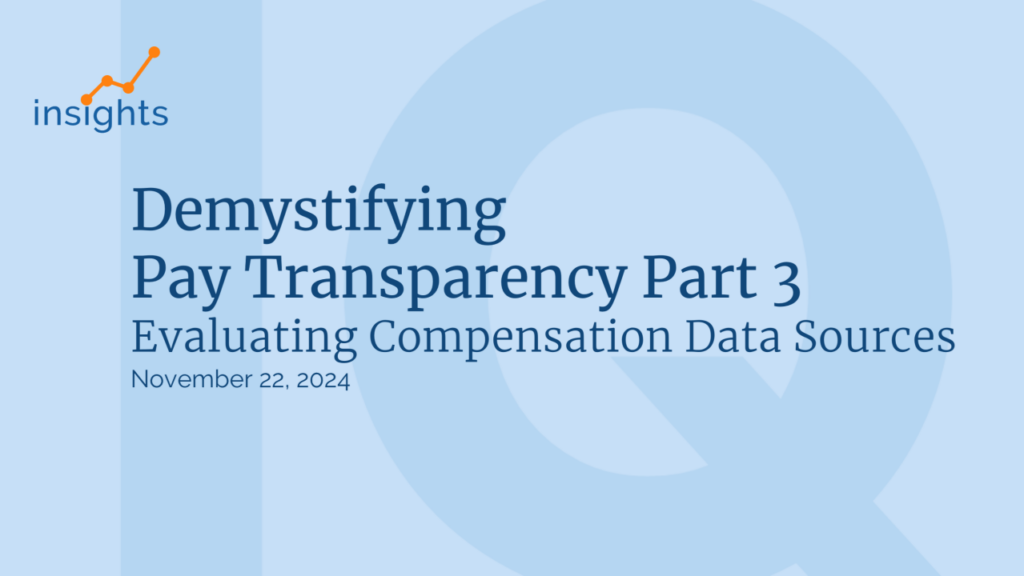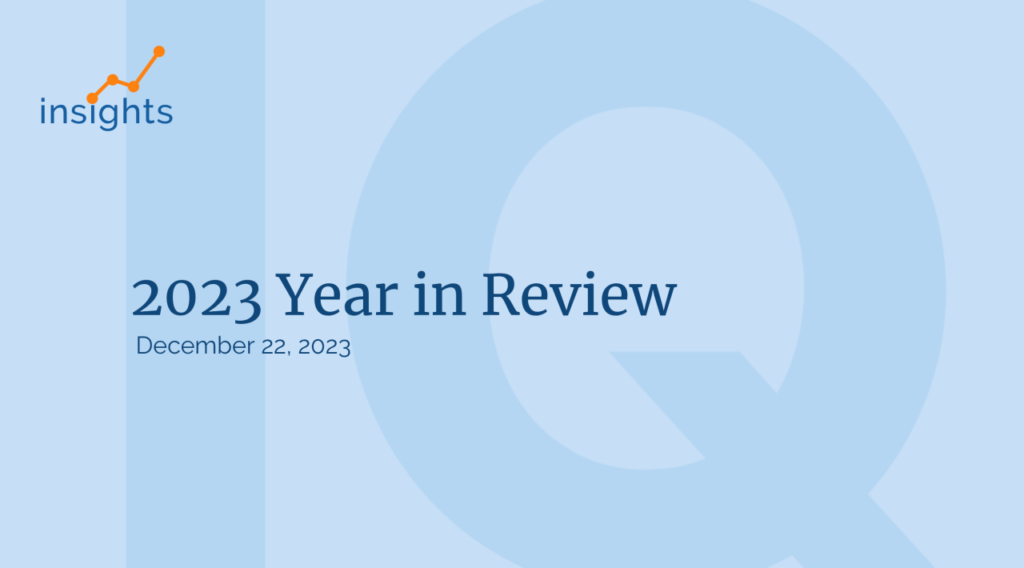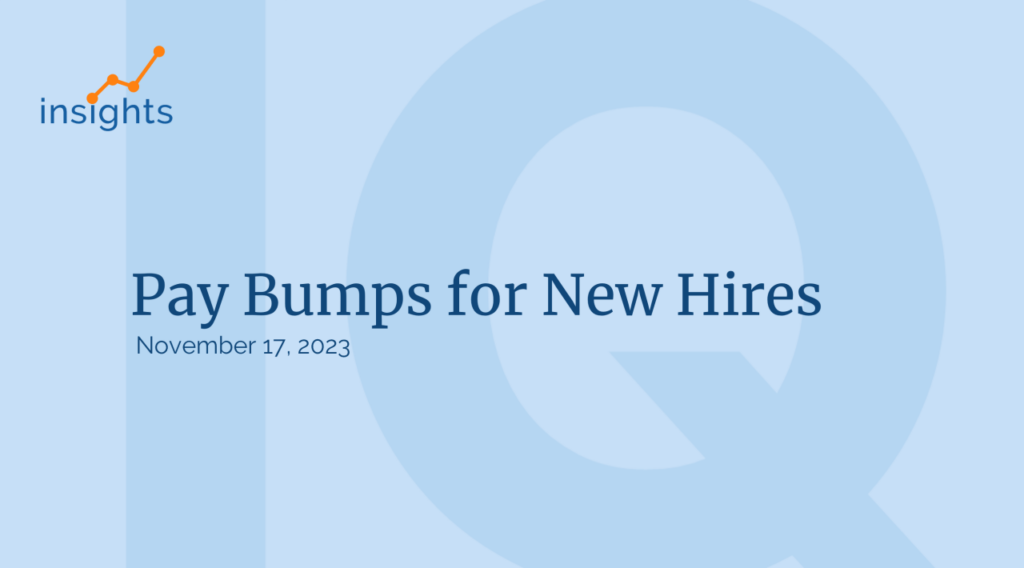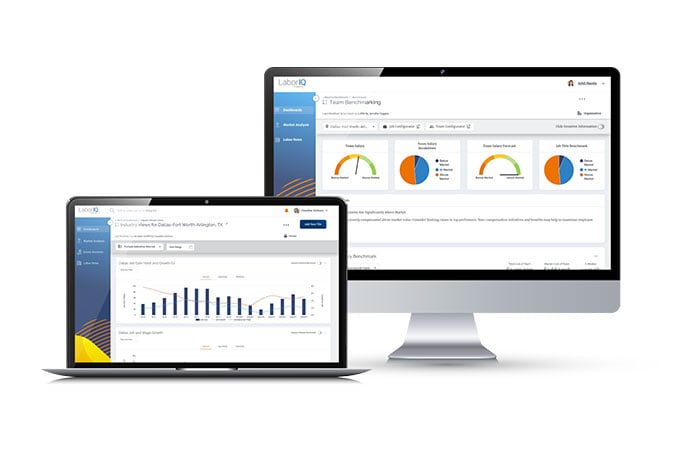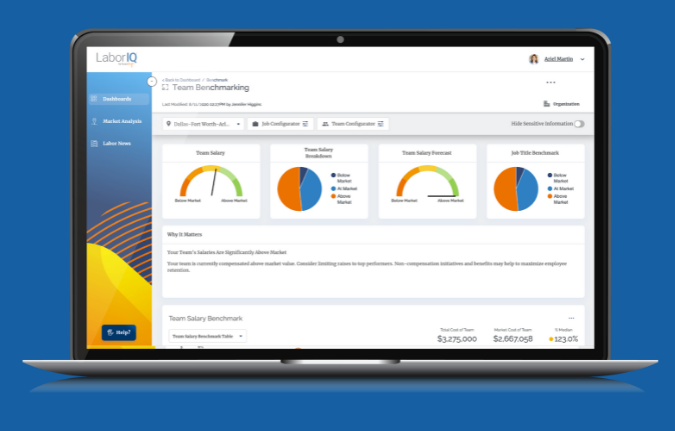Breaking down the essentials and exposing how easy it can be to create and manage pay bands for your organization.
A pay band is a salary range that defines the minimum and maximum compensation for a specific job, job level, or group of similar positions within an organization. It establishes the boundaries within which an employee in that role can be paid.
Structure and Components
A typical pay band includes a minimum (the lowest acceptable salary for the role), a midpoint (often representing the market rate for fully competent performance), and a maximum (the highest salary someone in that position can earn). The midpoint often reflects salary benchmarking data to align with the market rate for competent performance. For example, a pay band might be $60,000 – $80,000, with a midpoint of $70,000.
How Pay Bands Work
New employees typically start somewhere in the lower portion of the band, with room to grow within that range based on performance, experience, and tenure. High performers might reach the midpoint or maximum, while those exceeding the band maximum might be candidates for promotion to a higher-level role with a different pay band.
Benefits of Pay Bands
Pay bands provide structure and consistency in compensation decisions, help ensure internal equity, simplify budgeting and salary administration, and create clear expectations for employees about their earning potential. They also help organizations stay competitive by anchoring pay ranges to market data.
Flexibility and Management
Organizations can adjust individual salaries within the band based on factors like performance, skills, experience, or market conditions without changing the overall structure. Pay bands are typically reviewed and updated periodically to reflect market changes.
Width and Positioning
The width of pay bands varies by organization and job level. Entry-level positions might have narrower bands (20-30% spread), while senior roles often have wider bands (40-60% spread) to accommodate greater variation in experience and performance.
Pay bands provide a framework for fair, consistent, and defensible compensation decisions while maintaining flexibility for individual circumstances.
There are cost effective compensation software tools that allow HR teams to easily create, approve and manage pay bands. LaborIQ’s Pay Band Manager™ saves hours of research and expense, and provides operational efficiency across the organization.

